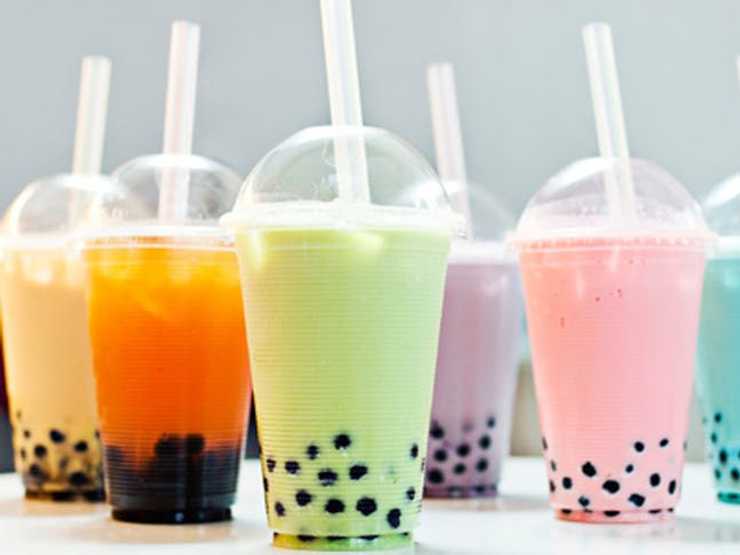The PopulariTea of Bubble Tea
You call it Boba, we call it Bubble Tea. We are not savages.
The world’s favorite creamy cup of tea’s popularity only grows as the number of bubble tea shops popping up in every city would suggest, often with competing stores down the block. The lines that already stretch outside of the doors of Gong Cha or Kung Fu tea only grow larger nowadays. Kung Fu Tea went as far as to declare April 30th National Bubble Tea day in an attempt to latch onto a broader audience.
In recent years, Bubble tea has evolved from a niche dessert drink into a younger generation’s beloved beverage. For those who haven’t been caught in the craze, most bubble tea products contain an iced tea base with milk mixed in. One of its defining characteristics is the sweet and chewy tapioca pearls which are often referred to as boba and they add texture to the drink, not to mention that it’s fun to find them at the bottom of the cup. Many stores distinguish themselves with an assortment of different tea bases, sweetened milks, and flavored boba.
Why is bubble tea so popular?
Breaking down bubble tea’s massive success and popularity was challenging because there are many cultural, economic, and social factors. First, let’s get the elephant out of the room and say that bubble tea is delicious. It’s filled with sugar which we all crave. Even if you ask for reduced sugar, you know it will still be sweet. Many people have cut equally sugary snacks from their diets such as candies and cake, but why not bubble tea? It may have something to do with the name and its connotations. Bubble tea has so far avoided the endless bombardments of rants and health scares other foods have gone through. Self proclaimed health whiz’s, ‘medical experts’, and shady sites have yet to touch bubble tea’s reputation. In combination with the having ‘tea’ in its name, bubble tea dodges health concerns.
Low barrier to entry
Bubble tea is easy to get. In most major cities, tea shops are being opened at an insane rate, outpacing other food competitors. You can easily find several bubble tea shops literally on the same block. The prices of bubble tea are also relatively low. You can find them in the range of $4-7 for a large drink which puts them in line with coffee prices and small snacks. Bubble tea is easy to get because it is everywhere and because it is cheap.
Subtle Asian Traits
On Subtle Asian Traits Bubble tea is a dead horse that continues to be beaten over and over for those facebook likes. We made a basic python bot using selenium to parse through a couple hundred of the newest posts posted on subtle asian traits looking for the words ‘bubble’, and ‘tea.’ The bot found that 21% of the newest 200 posts contained those keywords. Jesus Christ. The popularity of bubble tea is exacerbated by its strong online following. Someone who is a part of the SAT group may not be craving bubble tea…until they see a yet another post about it and decide to bring their friends to the local Kung-fu Tea.

Friendly shops
Drinking bubble tea is widely considered a social activity. “Wanna get boba?” “When was the last time you had bubble tea?” When we look at bubble tea shops, we can find many commonalities and notice a trend that they are designed to accommodate and promote social gatherings. Bubble tea shops want to create an experience that brings in their customers (young people) over and over again.
The experience begins with waiting in line. Popular shops always have a line out the door and customers would wait for upwards of twenty minutes before reaching the counter. Whether the line is artificially created or necessitated by the crazy demand, having lines out the door. Having these long lines may deter some customers, but it ends up being a net positive as it signals to potential customers the popularity and worth of the product. For people new to bubble tea lines, their first thoughts may be ‘why is the line so long,’ ‘what are they buying.’ These are the ideal questions to drive interest and ultimately sales.
After entering the store, you may notice they typically have an open layout where the location the drinks are being made is the same room as everything else simple separated by the cashier counter. To a normal restaurant, this is definitely not a thing because it adds loud noise and chaos to the dining environment. But bubble tea shops operate differently, they thrive on adding noise and creating a more lively environment. Many shops will play EDM, Kpop, or top 100 music in the background. Some shops will play their music louder than others. This popular music is also a byproduct of the people who work there–typically younger people in high school or college. Bubble tea shops provide employment opportunities for young people, but the tea shops have a lot to gain as younger workers tend to open a more welcoming atmosphere for also younger customers.
There are always seating arrangements for groups of people. Small tables and seats are placed in a seating area. You can oftentimes find games such as Uno and Jenga to play. This encourages social behaviors, conversation, and again, adds to the vibe of the shop. What separates a lot of the successful bubble tea shops from the not-as-successful ones is its Instagrammability. Shops will purposefully design the shop to have proper lighting and decor for instagram photos. Bigger stores will have attractions that pull in crowds such as neon signs and plant walls. Being posted on Instagram is free marketing to the shop and will lure more people to come.
The only thing left in the experience is you, drink in hand, lapping up the creamy tea while chewing on flavorful jelly pearls.

